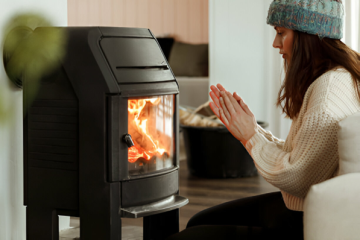In recent years, smart home technology has developed rapidly, and ambient lamp such as smart bulbs and smart light strips have become a popular and easy-to-use entry point for home automation.
But what exactly are smart light bulbs? How does it improve your daily life? This article delves into the intricacies of smart light bulbs, their features, benefits, and considerations for integrating them into your home.
What are smart light bulbs?
Smart light bulbs are LED light bulbs that can be controlled wirelessly through a smartphone app, voice assistant, or home automation system. Unlike traditional light bulbs that require manual operation, smart light bulbs offer a range of functions that can be managed remotely.
This functionality is enabled through a variety of communication protocols, including Wi-Fi, Bluetooth, Zigbee, and Z-Wave.
Key Features of Smart Bulbs
Remote Control
Smart bulbs can be turned on or off, dimmed, or brightened from anywhere using a smartphone app. This feature provides convenience and flexibility, allowing users to control their lighting even when they are not at home.
Voice Activation
Integration with voice assistants like Amazon Alexa, Google Assistant, and Apple Siri enables hands-free control. Users can simply issue voice commands to adjust their lighting, making smart bulbs particularly useful for individuals with mobility issues or busy households.
Scheduling and Automation
Users can set schedules for their smart bulbs to turn on or off at specific times. Automation features allow the lights to interact with other smart home devices, such as motion sensors or security systems, creating a cohesive and efficient smart home environment.
Color and Ambiance
Many smart bulbs offer adjustable color temperatures and a full spectrum of colors. This allows users to customize their lighting to suit different moods, occasions, or times of the day. For instance, warm light can create a cozy atmosphere in the evening, while cool light can enhance focus and productivity during the day.
Energy Efficiency
Smart bulbs are typically LED-based, which means they are more energy-efficient than traditional incandescent bulbs. Additionally, their ability to be dimmed and scheduled further contributes to energy savings.
Benefits of Smart Bulbs
Convenience
The ability to control lighting from anywhere adds a significant level of convenience to daily life. Whether you’re in another room or another country, you can ensure your home is lit as desired.
Energy Savings
Smart bulbs can help reduce energy consumption through scheduling, dimming, and automation. They also often have a longer lifespan compared to traditional bulbs, leading to further savings on replacement costs.
Enhanced Security
With smart bulbs, you can create the illusion of occupancy even when you’re away. Scheduling lights to turn on and off at random times can deter potential intruders. Some smart bulbs can also be integrated with security systems to respond to alerts.
Customization
The ability to change colors and set scenes allows for a highly customizable lighting experience. Whether you’re hosting a party, reading a book, or watching a movie, you can adjust the lighting to create the perfect ambiance.
Types of Smart Bulbs
Smart bulbs come in various types, each with specific features suited to different needs and preferences.
- White Tunable Bulbs: These bulbs allow you to adjust the color temperature of the white light. You can switch between warm white and cool white depending on the time of day or activity.
- Color-Changing Bulbs: Color-changing bulbs offer a wide range of colors and are perfect for creating different atmospheres and moods. They are often used for decorative purposes or to add a fun element to home lighting.
- Dimmable Bulbs: Dimmable smart bulbs let you adjust the brightness level to your liking. This feature is useful for setting the right ambiance and can also help in reducing energy consumption.
- Specialty Bulbs: There are smart bulbs designed for specific fixtures and purposes, such as floodlights, spotlights, and even smart filament bulbs that mimic the look of vintage incandescent bulbs while offering modern smart features.
Setting Up Smart Bulbs
Setting up smart bulbs is generally straightforward, but it requires a few steps to ensure they work seamlessly with your home network and devices.
- Choose Your Bulbs: Select smart bulbs that are compatible with your existing home automation system or the voice assistant you plan to use.
- Install the Bulbs: Screw the smart bulbs into your light fixtures just as you would with any regular bulb.
- Download the App: Install the manufacturer’s app on your smartphone. This app will guide you through the setup process and allow you to control the bulbs.
- Connect to Wi-Fi or Hub: Depending on the type of smart bulb, you might need to connect it to your home Wi-Fi network or a smart home hub. Follow the instructions provided by the app.
- Pair with Voice Assistant: If you want to use voice control, follow the steps to pair the bulbs with your voice assistant. This usually involves linking your smart home account with the voice assistant’s app.
- Customize Settings: Use the app to customize your lighting settings, create schedules, and set up automation rules.
Considerations When Choosing Smart Bulbs
- Compatibility: Ensure that the smart bulbs you choose are compatible with your home automation system, voice assistant, and any other smart devices you have.
- Connectivity: Consider the communication protocol used by the bulbs. Wi-Fi bulbs are easy to set up but can congest your network, while Zigbee and Z-Wave bulbs require a hub but offer more reliable connections.
- Brightness and Color: Check the lumens rating for brightness and the range of colors available to ensure the bulbs meet your needs.
- Price: Smart bulbs can be more expensive than traditional bulbs, so consider your budget and the features you prioritize.
Conclusion
Smart light bulbs represent a major advancement in home lighting, combining convenience, efficiency and customization. By understanding what smart light bulbs are and how to use them, you can transform your home into a more comfortable, secure, and energy-efficient space.




